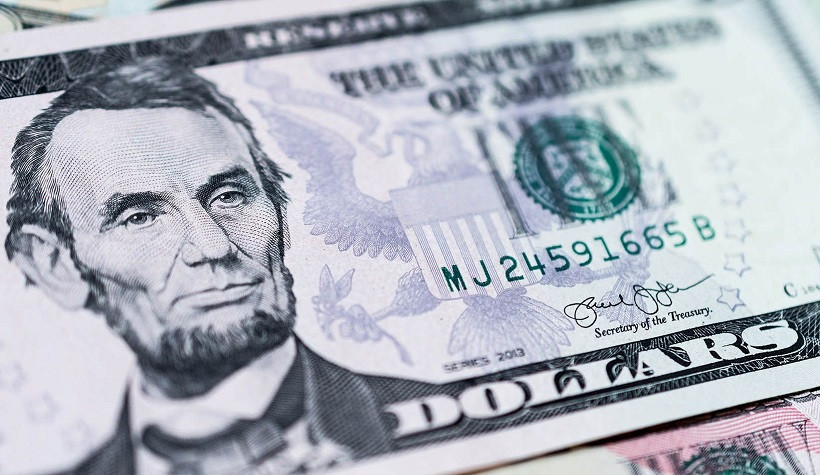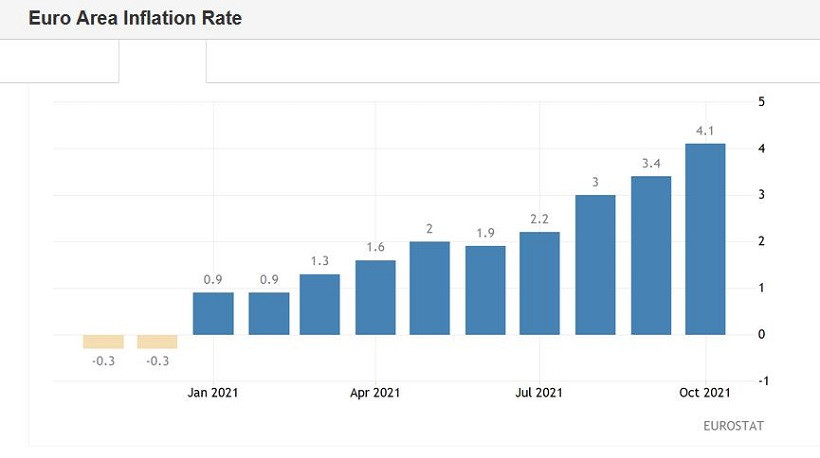The blitzkrieg of buyers of the EUR/USD pair failed. After the bulls failed to enter the area of the 17th figure (without even testing the 1.1700 mark), the bears seized the initiative and won back all the positions lost Thursday. The behavior of traders looks quite logical. The upside impulse began to fade immediately after crossing the resistance level of 1.1680 (the upper line of the Bollinger Bands indicator on D1), after which the "domino effect" worked. Market participants did not risk leaving longs ahead of the weekend, especially against the background of such unstable corrective growth. As a result, the pair turned 180 degrees and returned to the previous price range of 1.1580-1.1650.

The fact that the pair was declining on Friday against the background of a record increase in inflation in the eurozone looks very indicative. The published data turned out to be in the "green zone," reflecting the increasing price pressure. Thus, the overall consumer price index jumped to 4.1% in annual terms. This is the maximum value for the last 13 years. Prices for energy, services, food, alcohol, and tobacco rose the most. Among the reasons for such dynamics are the consequences of the energy crisis, increased tax burden, and supply disruptions, which only increase price pressure. The core index, excluding food and fuel prices, was also in the green zone, rising to 2.1% (experts expected to see this component at the level of September, that is, at around 1.9%). The European economy also pleased, which grew by 3.7% (YoY) in the second quarter.
In general, Friday's data showed that the CPI at the moment is more than twice the target two percent indicator of the European Central Bank. And apparently, in the coming months, inflation will continue to grow. It would seem that this is a reinforced concrete reason for strengthening the euro. After all, inflation indicators continue to grow contrary to the opposite forecasts of ECB representatives, who at the beginning of the summer assured traders that the growth is temporary, and by the end of the year the CPI will bite its nose, turning downside.
But no! The euro completely ignored Friday's data releases and dutifully followed the US currency, which is regaining its position throughout the market. This suggests that Christine Lagarde was able to reason with traders, convincing them that the European Central Bank prefers price stability rather than inflationary growth in the short term. She acknowledged that the period of high inflation in the eurozone will remain "longer than expected," but at the same time, the head of the ECB eloquently made it clear that the regulator will continue to hold the line by implementing an accommodative policy. Thus, she refuted rumors that the European Central Bank may raise the rate next year.
That is why Europe's data on Friday has remained on the back of the attention of EUR/USD traders. Of course, if such a rate of inflation growth in the eurozone continues next year, it will be more and more difficult for the participants of the market to ignore this fact (in fact, as well as the European Central Bank). But the situation on Friday is different: after Thursday's "verbal pumping" by Lagarde, the euro turned out to be an outsider, and not only paired with the dollar (look at the dynamics of such crosses like EUR/GBP, EUR/CHF and even EUR/JPY).

But if the situation with the euro is more or less clear, then the current growth of the dollar (so rapid) looks quite surprising. All too quickly, traders brushed aside yesterday's release, which reflected the slowdown in the US economy in the third quarter. The 2% result was weaker than even the weak forecasts (2.6%). Why did the greenback come to his senses literally in a day, having regained lost positions in almost all pairs? In my opinion, there are several fundamental reasons. First, many experts, long before yesterday's release, predicted a temporary decline in the US economy in the third quarter, focusing on the word "temporary". In their opinion, in the fourth quarter of this year, as well as in the first two quarters of next year, the economic recovery should accelerate. Seems to be,
But if the situation with the euro is more or less clear, then the current growth of the dollar (so rapid) looks quite surprising. Traders quickly shrugged off Thursday's data, which reflected a slowdown in the growth of the American economy in the third quarter. The two percent result was weaker than even weak forecasts (2.6%).
Why did the greenback recover in just a day, regaining lost positions in almost all pairs? In my opinion, there are several fundamental reasons. Firstly, many experts predicted a temporary recession of the US economy in the 3rd quarter long before Thursday's release, while focusing on the word "temporary." In their opinion, the economic recovery should accelerate in the fourth quarter of this year, as well as in the first two quarters of next year. Apparently, traders for the most part also think that "the glass is half empty," and not vice versa.
Secondly, the US published the index of personal consumption expenditures (PCE). It is believed that this indicator is monitored very carefully by members of the American regulator. The core PCE index, which does not take into account volatile food and energy prices, rose by 3.7% in September (in annual terms), remaining at the same level as it was released in August, July, and June. Experts predicted growth to 3.7%, but in this case, the "red zone" did not spoil the overall impression of the release.
The growth of anti-risk sentiment in the market also contributed to the strengthening of the greenback. Note that exactly a week ago, US President Joe Biden unexpectedly announced that the United States would defend Taiwan in the event of an attack by China. This week, the key figures of the presidential administration did not develop the bellicose rhetoric of their "boss" - on the contrary, the tone of their statements was diplomatic.
However, on Friday, the situation has escalated again: Taiwan President Tsai Ing-wen confirmed the presence of the US military on the island. It should be noted here that China considers Taiwan part of its territory, so such a statement may increase tensions between the United States and China. But, a little later, Taiwan's Defense minister clarified that Tsai Ing-wen did not mean the permanent basing of American forces on the island – allegedly it was about military instructors. But nevertheless, the "Taiwan issue" was again on the agenda, thereby increasing the interest of traders in the dollar as a protective asset.
 Thus, the EUR/USD pair made a circle and returned to its previous positions. The targets, in fact, also remained the same. It is advisable for traders to consider the option of short positions with the first target of 1.1570 (a two-week price minimum) and 1.1528 (an annual minimum that coincides with the lower line of the Bollinger Bands indicator on the D1 timeframe). It is too early to talk about lower price values.
Thus, the EUR/USD pair made a circle and returned to its previous positions. The targets, in fact, also remained the same. It is advisable for traders to consider the option of short positions with the first target of 1.1570 (a two-week price minimum) and 1.1528 (an annual minimum that coincides with the lower line of the Bollinger Bands indicator on the D1 timeframe). It is too early to talk about lower price values.
